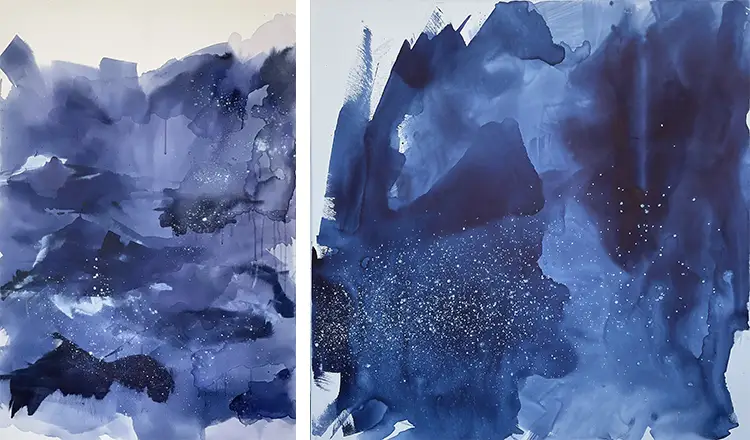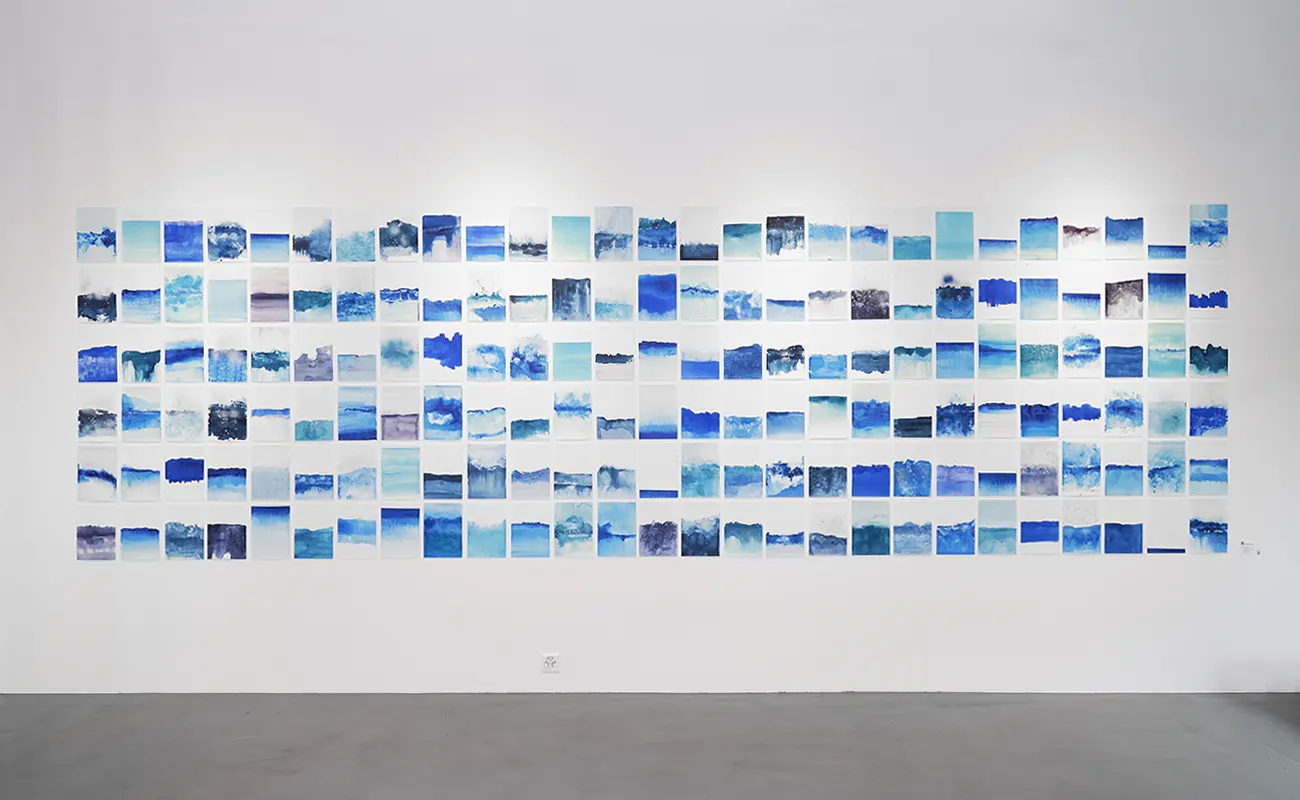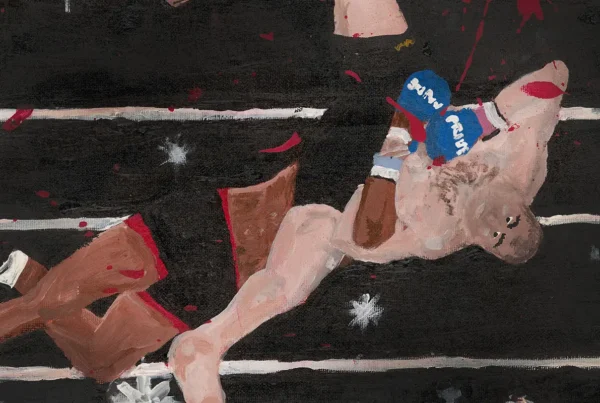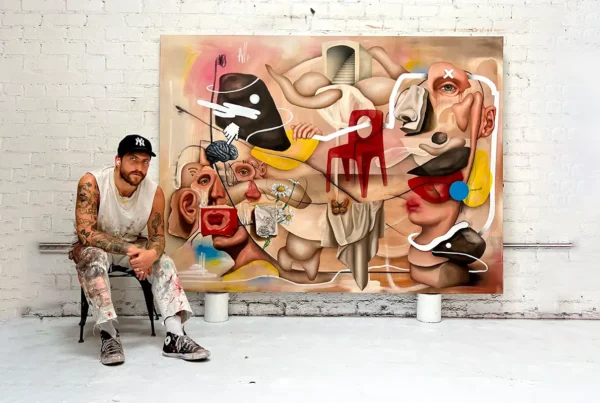“Being an artist means proposing new worlds new way of thinking or looking into reality.”
Engaging Nature and Nurturing Early Artistic Echoes
Born in Geneva in 1976, Joëlle Cabanne has long found wonder in scrutinizing the delicate subtleties of her surroundings. Nurtured amidst the pastoral serenity of the rural commune of Satigny and juxtaposed against the avant-garde urbanity of the Avanchets housing estate, she found her artistic sensibilities to be shaped by the dichotomy of nature and city. Moreover, embarking on equestrian pursuits from a mere age of four, Cabanne encountered an altered perception of the world; her elevation on horseback bestowed upon her a distinct, elevated viewpoint of nature, weaving a unique tapestry into her artistry.
The solace Cabanne found in drawing and horses was not merely a whimsical childhood escapade but rather a profound refuge, particularly as an only child of separated parents. Her Italian lineage imbued her with a rich cultural background, further becoming a silent partner in her artistic journey. Amidst the gentle rustle of tracing paper in her architect father’s workplace, the young artist found not just a sanctuary but a mode of expression, a medium through which the world around her was communicated, digested, and subsequently reborn through her ensuing works.
With her first exhibition at the tender age of 16, Cabanne didn’t merely showcase her early work but catapulted herself into an unceasing journey of exploration and production in the art world. The encouragement derived from this initial foray into public artistic expression ensured that she would persistently engage with her craft, affirming a daily dedication to her drawing and overall artistic exploration. Thus, her lifelong intertwining with nature, cultural heritage, and personal experiences culminate in a body of work that whispers of familiar scenes, yet speaks with a resonance uniquely Joëlle Cabanne’s.

Joëlle Cabanne: Molding Abstract Expressionism with Hands and Digital Dexterity
Joëlle Cabanne embarked on her educational journey in the arts with a youthful dalliance into ceramics, which blossomed on non-school Wednesdays at the tender age of seven. This initial endeavor later evolved into a fascination for enamels and engobes, paving the way for a future wherein her creativity knew no bounds. The artist further nurtured her academic pursuits with a baccalaureate in fine arts from Voltaire College, followed by an in-depth exploration of art history and film history at university level. Subsequently, a transition into the intricate world of architecture occurred, resulting in a professional life where these disciplines converse and coalesce in a harmonious synergy, each informing and enhancing the other in a delicate dance of influences and expertise.
In carving out a distinctive stylistic niche, Joëlle gracefully leans toward abstract expressionism, exploring a creative process that is profoundly meditative and serene, often likened to the peaceful practice of yoga. Her paintings, predominantly employing indigo ink, find their canvas in both traditional paper and fabric forms, with large Chinese brushes and uniquely crafted materials, such as balsa wood chopsticks, becoming instrumental in her artistic expression. This hands-on approach to artistry not only defines her style but also becomes emblematic of an artist who meticulously curates her tools and media.
Joëlle Cabanne employs a unique, ground-based art technique, forgoing the conventional easel to freely navigate around her canvas or paper. This allows her a physical, uninhibited engagement with her work. The artist crafts a kinetic synergy, intertwining her motions with the ambient soundscapes to which she is finely attuned. This dynamic interaction between movement, sound, and visual expression not only defines but enriches her artistic process, offering a captivating sensory journey that effortlessly binds creator and observer within a shared, evocative experience.
Parallelly, Cabanne’s work in digital media seamlessly weaves her vivid imagination into the visual tapestry of her creations, transforming photographs of landscapes into uncharted, uninhabited worlds, and, thereby, dexterously reinventing reality. In this digital domain, she orchestrates a delicate balance between the tangible and intangible, rendering visible the unseen territories of her imagination, while still firmly anchoring her work in a base of recognisable, physical media.

A Canvas Painted with Personal Experiences and External Inspirations
In the luminous trajectory of Joëlle Cabanne’s artistic journey, a myriad of influences seamlessly interweaves with her personal experiences, crafting a tapestry rich in color and substance. The allure of Jim Jarmusch’s cinematic creations, particularly his distinctive use of black and white, coupled with the seamless integration of rhythm and music, has long held a significant impact on her since her adolescent years. Similarly, the work of Valérie John, notably her enchanting and innovative engagements with indigo, has also captivated Joëlle, echoing a resonant influence through her own distinct interaction with various materials. Despite these notable inspirations, identifying a singular dominant artistic influence remains an evasive task. Numerous artisans and their respective philosophies have subtly shaped her approach, yet it is notably the built and natural landscape that prominently emerges as her principal muse.
From an early age, the world of art was not a distant abstraction to Joëlle but a palpable reality, notably illustrated when, at the tender age of five, she endeavored to engage with Rembrandt’s Night Watch, symbolizing her nascent fascination with the potent ability of artists to conjure worlds and vividly represent reality. Her parents, acting as the first conduits to this expansive universe, nourished this burgeoning passion, unwittingly sowing the seeds for a life richly entwined with artistic exploration and expression.
Cabanne’s ventures into various artistic practices bear witness to an explorative spirit, dancing fluidly across numerous mediums including pigment, acrylic, oil, and various forms of drawing, as well as photography. Since 2019, she has dedicated herself to painting exclusively with indigo ink, spellbound by its multifaceted blue hues and the evocative manner in which it caresses the canvas. Her work not only reflects a myriad of blue tones but also an abyss of emotional and conceptual depth, inviting the observer into a world where color and emotion coalesce into a vibrant tapestry of expressive art.

Joëlle Cabanne: An Introspective Exploration of Art, Memory, and Sustainable Creativity
Joëlle Cabanne deftly navigates through her creative journey, ensuring a symbiotic coexistence of her architectural office and artist’s studio. In this dual space, Cabanne ingeniously employs isolation through the use of headphones, becoming enveloped within her own introspective world of creativity amidst the humdrum of a professional environment. The choice between immersing herself in the mellifluous embrace of music or harnessing the silent profundity of the nocturnal hours isn’t merely a preference but a dedicated strategy. Here, establishing a routine that prioritizes contemplative thinking over immediate action proves to be pivotal. Instead of diving directly into painting, she cultivates her artistic flow over successive sessions, wherein ideas can germinate and evolve within her mental and emotional scape before manifesting onto a physical medium.
A project imbued with a wealth of personal significance and nostalgic reflections has long been nesting within Joëlle’s imaginative reserves. This envisioned artist’s book and accompanying installation seek to intertwine photographic snippets from her childhood with detailed explorations of her personal works, amalgamating them with textual contributions from both her professional and personal networks. Viewing this autobiographical compendium as a retrospective, it doesn’t merely chart her artistic trajectory but also aspires to be exhibited in the grandeur of an art biennial, particularly as a large, immersive Blue installation, representing a confluence of personal memory and artistic evolution.
In a parallel endeavor, Cabanne embarks upon a fascinating venture into sustainable artistic production, initiating a project that quite literally takes root in her garden with the planting of indigo trees. This isn’t merely an exercise in gardening but a step towards crafting her own ink, hinting at a future where her artistic creations are not only influenced by but directly derived from her personal environment, weaving a tangible connection between her art and her immediate natural world. This integration of personal, professional, and environmental aspects elucidates a holistic approach to her artistic expression and methodology.






